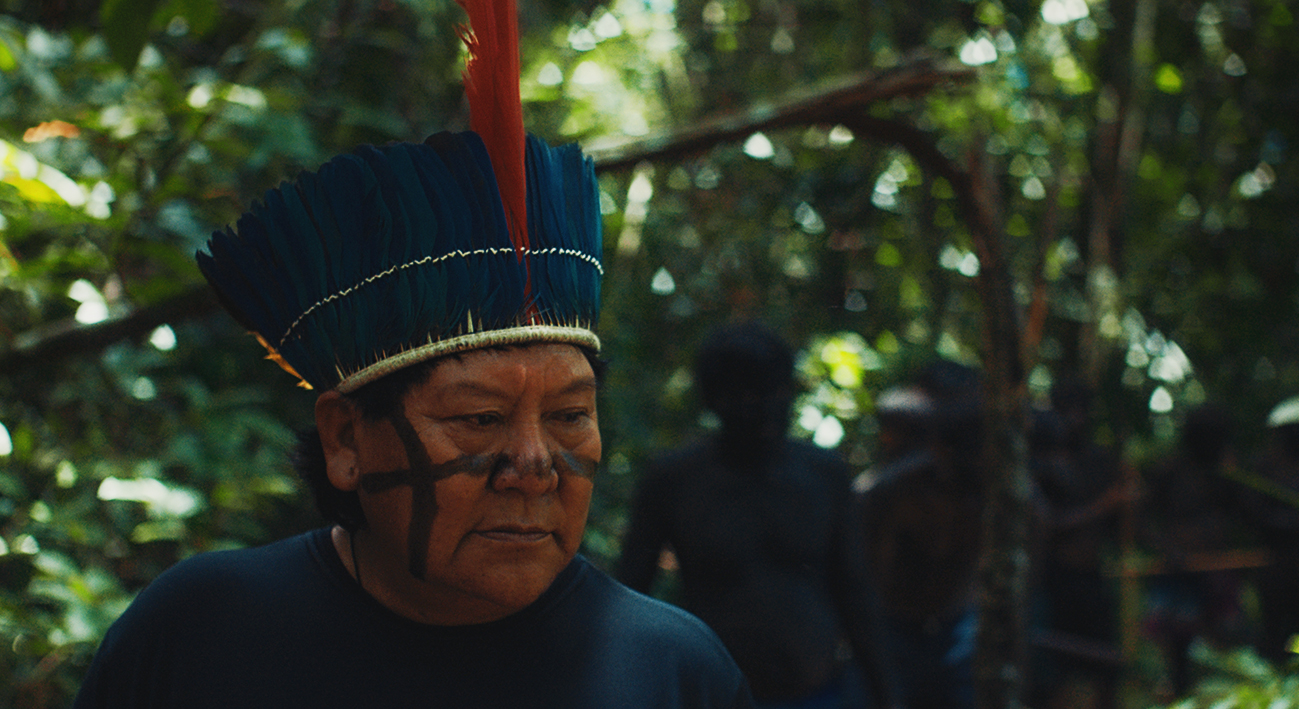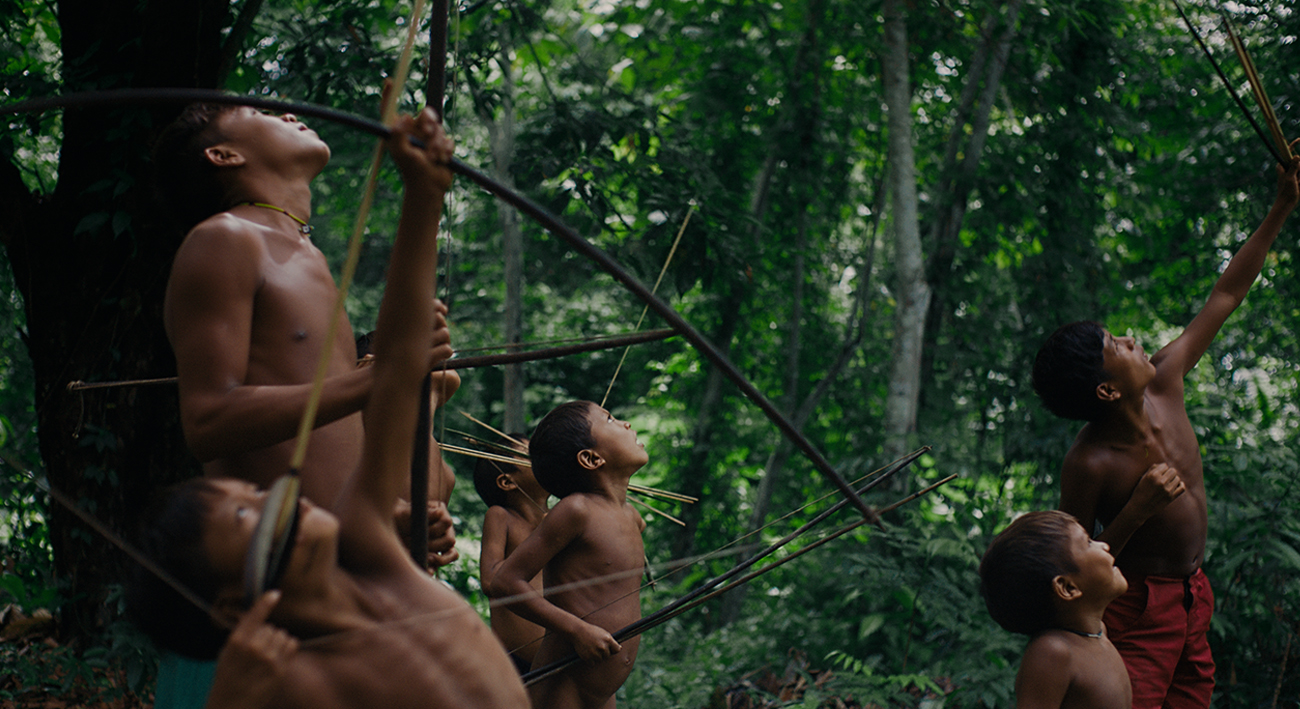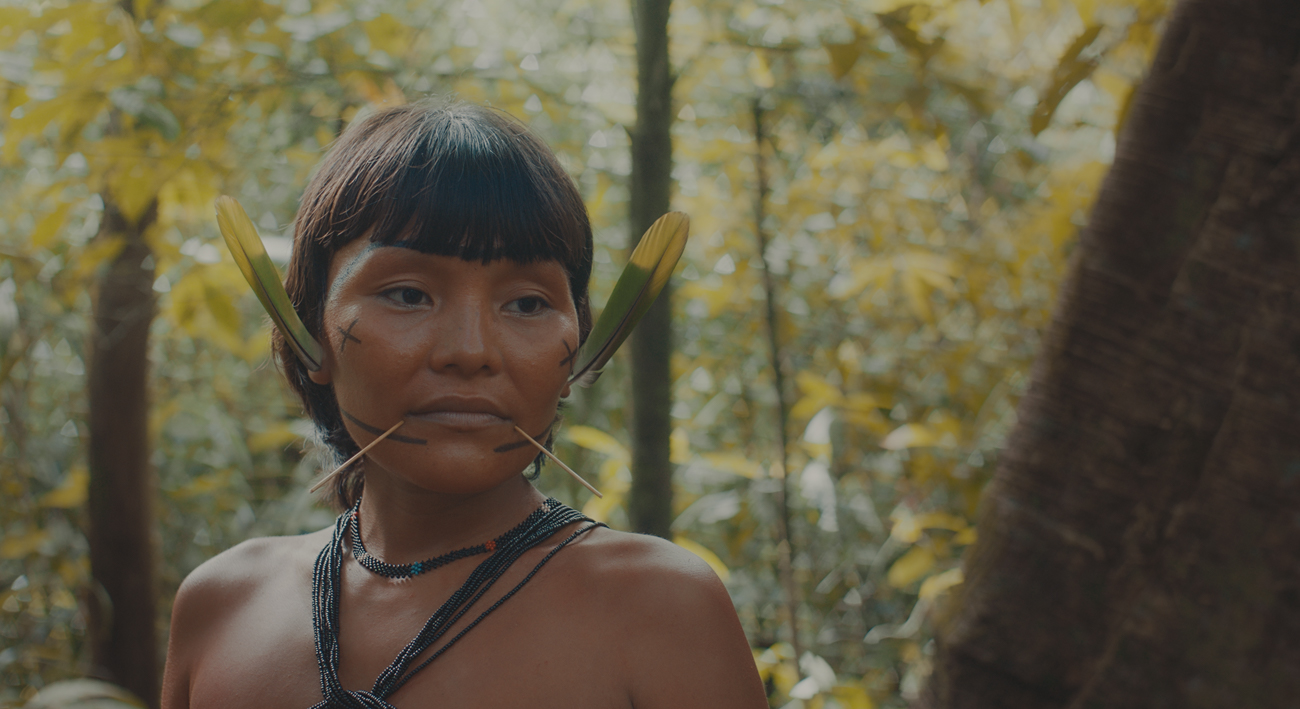Part documentary and part retelling, A Última Floresta (The Last Forest), directed by Luiz Bolognesi follows Davi Kopenawa, a Yanomami shaman in the jungles of the Brazilian-Venezuelan border region. In the face of adversity and danger, Davi tries to keep the spirits of the forest and tradition alive.
Bolognesi’s interest in Indigenous civilizations started in university where he studied anthropology. When he started working in cinema, he decided to make films about Indigenous people and the issues they face because there wasn’t a lot of talk or work with these subjects. After working on two films that traveled the festival circuit, Birdwatchers and Ex Shaman, he wanted to make a documentary that would show the world, “the places in Brazil, where these shamen are still very strong, where the future is still very strong, where they are trying to refuse weapons and fireguns, to hunt (instead) with their they are traditional arrows, where they are trying not to take our kind of food, but to give their ancestral food that comes from from from the forest to the children and worthy belief in the spirits all the time.” Bolognesi invited co-writer and Yanomami shaman, Davi Kopenawa, onto the project because of his background and his world-renowned activism. “We decided what stories we would tell together.” says Bolognesi, “Before going with all the the cinema team to the village, in the middle of the forest, I went by myself with my producer. We decided with Yanomami people and with the village people, what stories we would tell. They decided that they would like to show in the cinema, their fantastic beings, and their dreams. So it was decided to make a kind of feature in the documentary, to show their dreams and to show their myths. Because for them, these things are real, they are alive. They are everyday material. They talk about them everyday. “

The process of deciding which stories were going to be told onscreen was up to the Yanomami. “They were the ones who decided we talk. And when I mean “we” it’s interesting because at first we were all men, the old men, the most prestige hunters, and Davi. So we talk a lot and that night, these leaders, decided what story would we tell that’s the way they decided. We would also for example, to tell the story of Omama and Yoasi, the two brothers that create the forest, the animal people. They decided we had to shoot them to show for white people because they don’t know where to start, and also for our young people, because if we had with the stories in our cinema, maybe the next generations will have the stories forever. ” says Bolognesi. But at the same time, Bolognesi also wanted to include some female narratives. At first, Davi was hesitant, but agreed to showcase the story of the water goddess, Thuëyoma. Then, choosing who would play the characters was the next major question. The people asked him, “If we are 200, the Yanomami here, who are you choosing? And how are you going to choose? I said it’s not me who choose, it’s going to be the camera.” Bolognesi responded, “A camera is a kind of shaman and when the camera falls in love for someone, this person is chosen to the film. They said “Yeah, great. Let’s do like that. Let’s wait that the camera falls in love.”

Building trust and maintaining trust was not easy for the film team. “The white men, for them, have made very bad impressions. The boys, the children, they are afraid about white men.”, explains Bolognesi. The Yanomami were reluctant to allow them into their community because of recent and historical violence with white men. After learning more about his background, they decided to let him in. “When I arrived, what happened is that when we go to the jungle, to the to the real, desolate jungle — we white men, we don’t know anything. We have to ask for everything . You had to ask if you can go there and drink water and they say “No, not now it’s time that the Jaguar is there, drinking water.” So you can’t go. I can walk at night and go to sleep? And some moments they say “Yes, tonight there is the white moon and you can walk.” But we don’t know anything. “Can I eat this fruit?” No it’s venom! “May I go to take a swim in this small river?” They can say yes. Or no, there is a snake there. So you can’t go. We don’t know anything. Because of that, children they smile, they laugh a lot about us. And they began to behave as if we were young children. So you are a kind of stupid. And what I did, I didn’t try to say that I was not a stupid, I decided to accept that I was that I am. I stupid in the forest.” This frame of mind helped bond them together. Open communication when the shoot was going well and when it was not helped peel back the layers and make the experience more collaborative, “They said, “we want to show this in a real way to all over the world so that they know how strong Yanomami shamans are. Because we can protect the planet. We are here to save the planet that you are destroying, then we depend on our shaman so we want to show that. ” But when I came to that after, and I said, “Can you translate me what shaman said so that I can put subtitles?” they said “No, the words of the shaman. white people are not prepared to understand. So we are not going to translate the word shamans.” And I said “Okay, fine.” Every time that they said things to me that I am was not allowed to do. I didn’t try to convince this. I said “Okay, I will do the way you say or I will do something different”, that bridge us, because I think it’s the attitude that someone that’s there must have. Because of that we create a very strong relationship.”

The film ends with Davi giving a speech to a group of people at Harvard University and it is the first time we see him out of the jungle. ” I thought it would be interesting to show for our audience that he’s recognized ,that he’s an important man. That the things that he knows are things that are important to our human being. The science of the forest that Davi keeps with him, bringing this 4000 years of silence, 4,000 years of future, 4000 years of mythology. The world must listen to these people because they know a lot about sustainability, about harmonic networks, about how to keep people alive with health, without destroying all the network that you have around you. ” Bolognesi decided to end on the image of Davi at Harvard because he thought it would be more interesting for the audience to go into the film without knowing that Davi was not only an important person to his people, but to the world as well. The team decided it would be stronger if this fact came as a surprise at the end — one moment you are in the jungle and the next, inside a lecture hall.
“I love making documentaries because you are surprised by reality, you that you don’t control everything,” says Bolognesi, “Like in fiction you have to control everything, you must be under control. In a documentary when surprises come, we are very happy. And I love that. For me, this is the funnest, the most interesting part of shooting documentaries. And that’s why I love to make documentaries!”